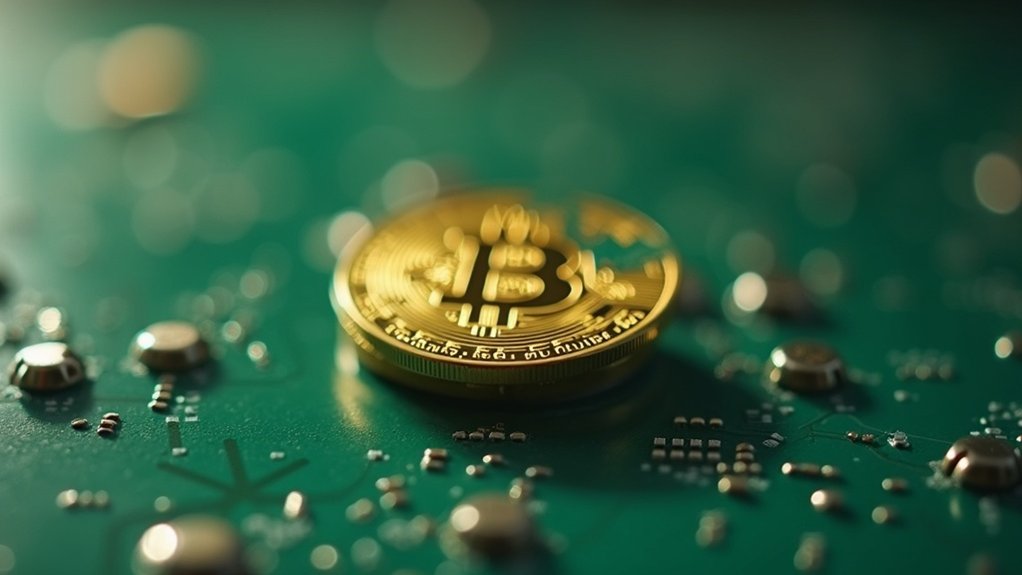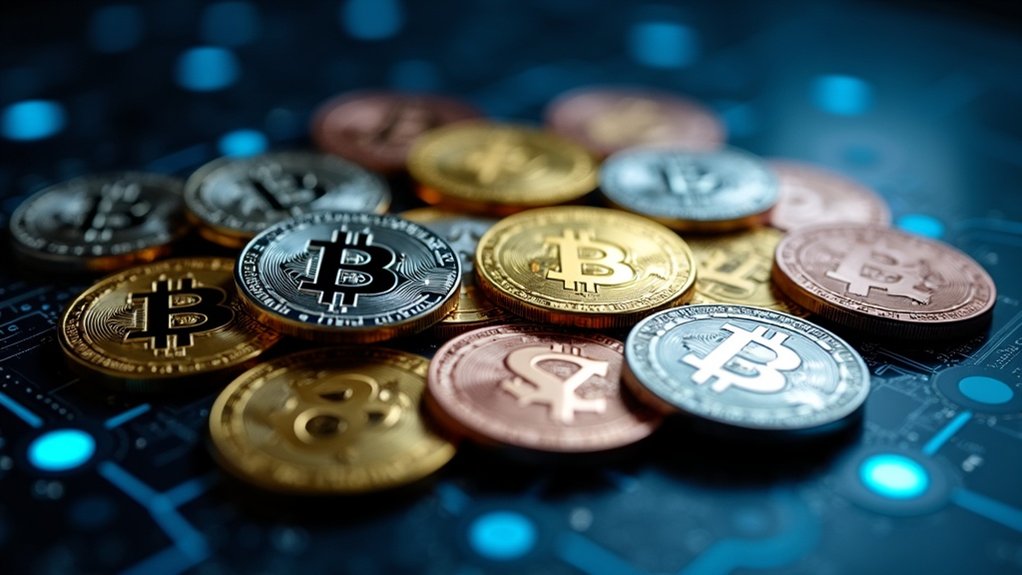Liquidity pools are smart contracts holding paired cryptocurrency tokens that enable decentralized trading. Users deposit equal values of two tokens, becoming liquidity providers who earn fees from trades. The pools use automated market makers with a constant product formula (x × y = k) to determine prices algorithmically. No middlemen or market hours exist. Risks include impermanent loss and smart contract vulnerabilities. Deeper pools mean better trading conditions for everyone in the DeFi ecosystem.
The backbone of decentralized finance. Liquidity pools transformed how we trade crypto, ditching the traditional order book for something far more elegant. They’re simply token pairs locked in smart contracts, enabling trades without needing a buyer and seller to match directly. Pretty clever, right? Users deposit equal values of two tokens—say ETH and USDT—and the pool handles the rest.
These pools run on automated market makers (AMMs), algorithms that determine token prices without human intervention. The most common formula is the constant product equation: x × y = k. Sounds complicated. It’s not. This just means when one token’s quantity decreases, the other increases to maintain balance. No middlemen needed. The code does everything. Similar to Bitcoin’s proof of work consensus, this system operates without central authority or intervention.
Algorithms set prices. Code maintains balance. Humans step aside while math handles the trading.
Anyone can become a liquidity provider. Just deposit your tokens, get LP tokens in return. These represent your share of the pool. Providers earn fees from every trade that happens in their pool. Free money? Not exactly. It’s compensation for locking up assets and taking on risk. Some pools offer additional rewards through yield farming—extra tokens to sweeten the deal. The LP tokens can also be utilized in other DeFi activities like staking to enhance overall gains. Many platforms also grant governance participation rights to LP token holders, allowing them to vote on protocol changes.
Entering a pool is straightforward. Deposit tokens, receive LP tokens. Leaving? Burn your LP tokens to withdraw your original assets plus rewards. The process varies between protocols, but the concept remains the same. Your contribution matters—more liquidity means better trading for everyone.
Liquidity pools reduce slippage and improve market efficiency. They’re always available—no holidays, no closing bell. Markets never sleep in crypto. Traders get better prices, and the ecosystem grows stronger with each new pool. Win-win.
But there are risks. Impermanent loss happens when token prices diverge from your deposit ratio. It can eat into profits or worse. Smart contract bugs? They exist. Market volatility? A given. Large trades still face slippage if pools aren’t deep enough. Nothing’s perfect in this space. Never has been.
Frequently Asked Questions
Can I Withdraw My Tokens Anytime From a Liquidity Pool?
Yes, users can generally withdraw tokens from liquidity pools anytime, but with caveats.
The process requires redeeming LP tokens for underlying assets. Sounds simple? Not always. Insufficient liquidity can limit withdrawals. Tokens used as collateral? Those are locked until debts are repaid.
And don’t forget gas fees—they’re inevitable. What you get back might differ from what you put in due to price fluctuations.
Different platforms have different withdrawal mechanics. That’s crypto for you.
What Are Impermanent Losses in Liquidity Pools?
Impermanent losses hit liquidity providers when token prices shift after they deposit.
Simple math: if prices diverge greatly, you’d have been better off just hodling. The AMM rebalances assets as prices change, creating this gap. It’s “impermanent” because losses vanish if prices return to original levels.
Volatile token pairs? Bigger risk. Stablecoin pools? Less drama. Trading fees might offset losses, might not. Nothing’s guaranteed in crypto, folks.
How Are Transaction Fees Distributed Among Liquidity Providers?
Transaction fees in liquidity pools are distributed proportionally based on each provider’s stake.
Simple math: bigger share, more fees. These fees aren’t paid out directly—they’re added straight to the pool reserves, automatically increasing the value of LP tokens.
Providers only realize these gains when they withdraw their funds. The system’s beautifully passive.
No monthly checks here; your earnings just silently compound until you cash out.
Pretty elegant, really.
Which Cryptocurrencies Work Best for Liquidity Pooling?
Ethereum dominates the liquidity pool scene—no surprise there.
Stablecoins like USDT, USDC, and DAI are perfect candidates due to their price stability. Solana and BNB work great too, thanks to their fast transactions and low fees.
Protocol-native tokens (UNI, SUSHI, BAL) add extra incentives for providers.
The best cryptos for liquidity pooling typically offer high throughput, low transaction costs, and strong ecosystem adoption.
Some networks are just built for this stuff.
Are There Tax Implications for Providing Liquidity?
Yes, there are significant tax implications.
Providing liquidity often triggers taxable events. Depositing tokens? That’s usually a crypto-to-crypto trade—hello, capital gains tax. Earning rewards from pools gets taxed as income. Withdrawing liquidity? Another potential tax hit.
Different jurisdictions have different rules. Some tax authorities are clear about it, others not so much.
Record-keeping is essential. Without proper tracking, tax season becomes a nightmare. No way around it—liquidity providers face complex tax situations.









